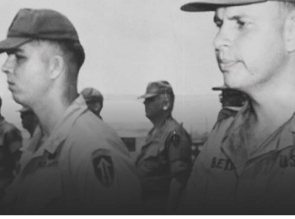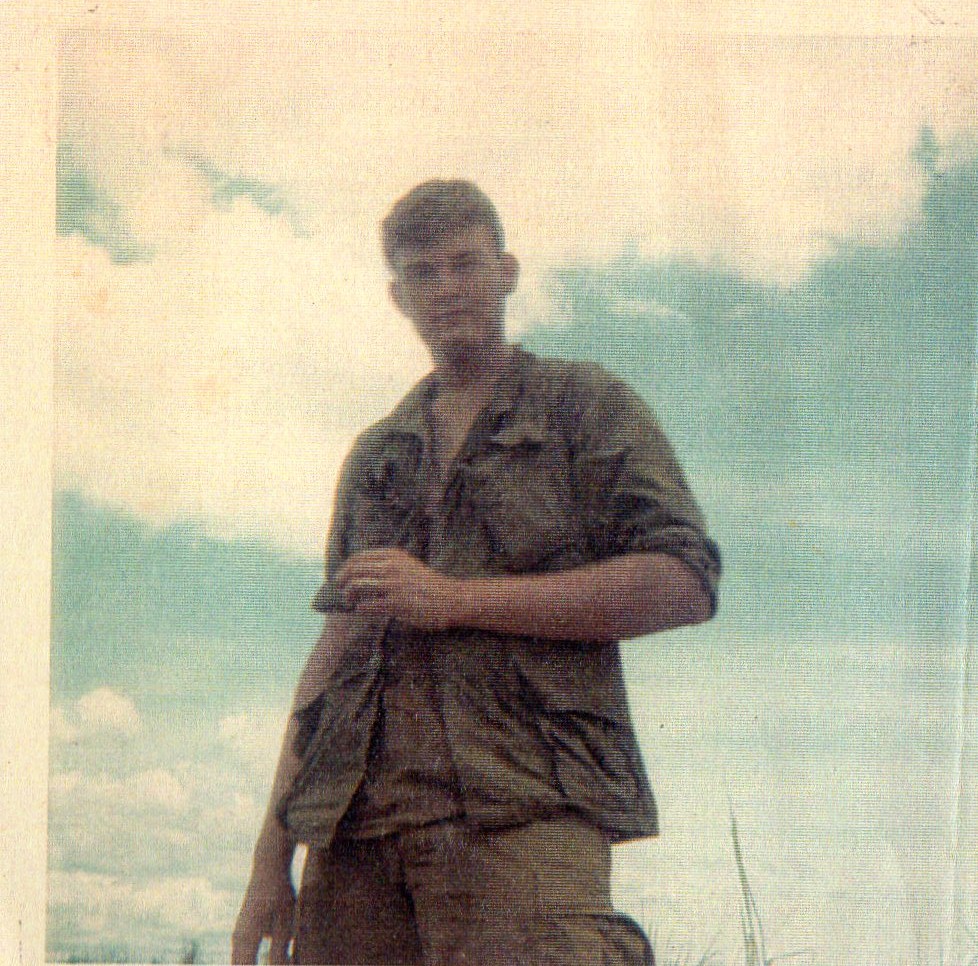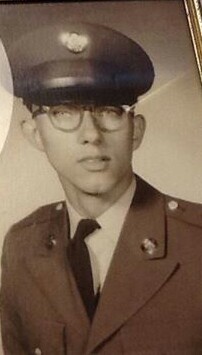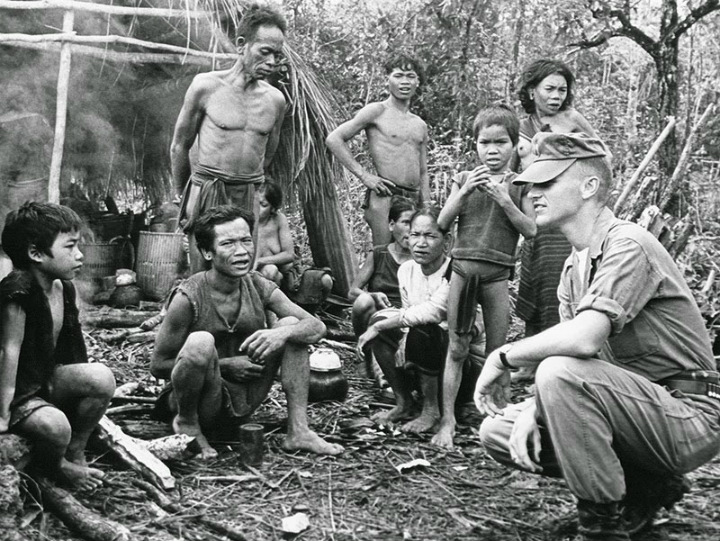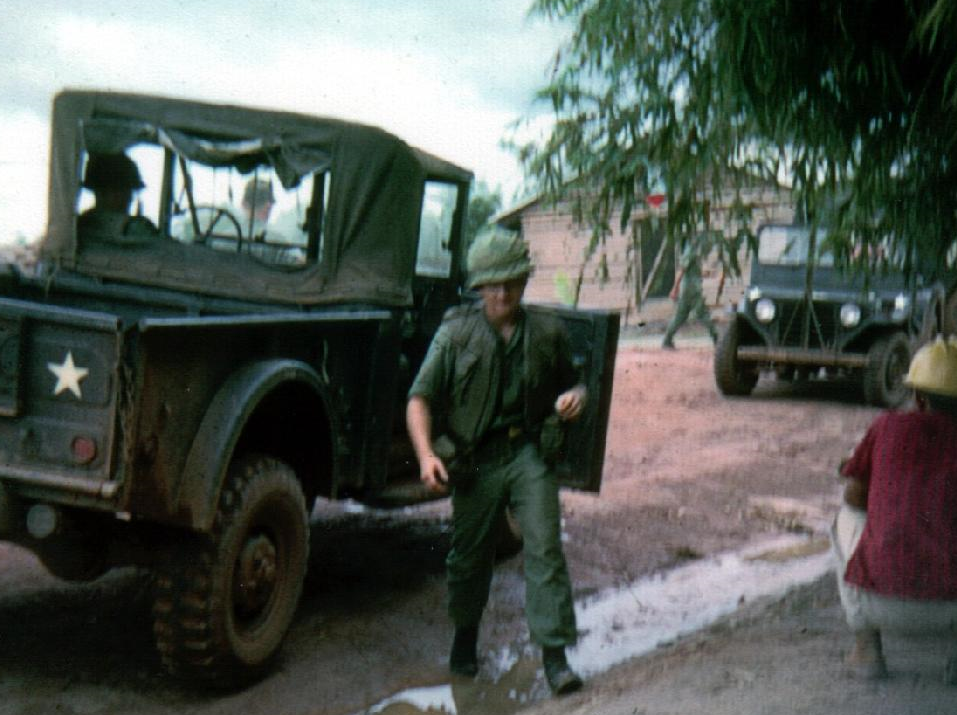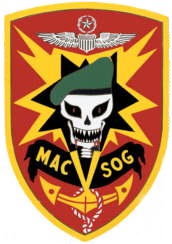A Name On The Wall
In December of 1965, I was assigned to Morse Code training for the U.S. Army Security Agency at Fort Devins, Massachusetts. The grueling six-month school to learn code was difficult, stressful and challenging. Many of us students bonded together to became friends during this time, helping each other when ever possible. One of my friends during this time was Jose Leopoldo Lujan, (Leo), who was also training to be an O5H, (Morse Code Intercept Operator).
Leo was from Natrona, Wyoming, had a friendly, open disposition and a wide smile. He and I would sometimes go out after hours to the attractions in the nearby town of Ayer. While he wasn’t in my specific classroom group, we were in the same barracks building and shared a class schedule that allowed us to go to meals together at the mess hall together with our small group of friends.
In the late spring of 1966, after graduating code training, we all received orders for our next duty station. He and I, (and many others), were assigned to Vietnam. He would be going to the 138th AVN Co (ASA), 509th ASA Group in Phu Bai, Vietnam, (I Corps). My orders assigned me to the 337th RRC, (ASA), 1ST Infantry Division HQ in Di-An, Vietnam, (III Corps).
Regretfully, I lost contact with Leo at that point. Throughout the years, even after leaving the army, I would often wonder about how he was and how he was doing. It was about 2012 when I was shocked to read an online article about him being killed in a crash of the fixed-wing aircraft, RU-8D Seminole, Vanguard 713, in which he was working Morse Code intercept duties during flight. I learned that the crash took place on Dec. 29, 1967 at the Phu Bai airport as the pilot was attempting to return to base after some mid-air problems. The pilot and co-pilot were killed on impact. Leo survived the initial crash but died on May 24th, 1968 from his injuries at a VA hospital in New Mexico.
As some may already be aware, the Army Security Agency, during the time of the Vietnam War, was in the chain of command to the National Security Agency. Currently, the NSA maintains the history of the ASA at the National Security Agency’s National Cryptologic Memorial website and at Ft. George G. Meade, Maryland. The memorial is described on the website as:
“The National Security Agency/Central Security Service Cryptologic Memorial honors and remembers those who gave their lives, “serving in silence,” in the line of duty. It serves as an important reminder of the crucial role that cryptology plays in keeping the United States secure and of the courage of these individuals to carry out their mission at such a dear price.”
When I saw an article written about this memorial online and in looking over the list of names honored, I noticed that Leo Lujan’s name was not there. Nor were the names of his pilot, Warrant Officer Milton W. Smith, and the co-pilot, Warrant Officer Johnathan P. Shaffer. I assumed there was an error of omission and sent the following letter to the NSA, wherein I included a copy of the incident report of the crash that I located online.
22 February 2019
National Security Agency
9800 Savage Rd. Suite 6272
Ft. George G. Meade MD 20755-6000
Sirs,
I am writing this today to report a possible oversight on the National Security Agency’s National Cryptologic Memorial website at:
https://www.nsa.gov/about/cryptologic-heritage/cryptologic-memorial/
Specifically, the names of three members of the Army Security Agency who served in Vietnam are not shown on the memorial though they were killed in action as a result of a plane crash on 29 Dec 1967. The pilot, WO Milton W. Smith, and the co-pilot, WO Johnathan P. Shaffer, were killed instantly and Spec-4 Jose Leopoldo Lujan, (05H, Morse Code Interceptor), died on 24 May 1968 from injuries resulting from the crash. All were members of the 138th Aviation Company Army Security Agency (ASA), based at Phu Bai Airfield in Thua Thien Province, RVN. See incident report info below.
“On December 29, 1967, a U.S. Army RU-8D (#56-3713), Vanguard 713, from the 138th Aviation Company Army Security Agency (ASA), crashed at approximately 1230 hours a 1/2 mile from the takeoff runway at Phu Bai Airfield in Thua Thien Province, RVN, while on a routine, but highly classified mission. A total of three crew members were on board the aircraft at the time of the crash. Several witnesses observed as the aircraft applied power and began its takeoff roll. During takeoff, the pilot experienced trouble. The aircraft was observed to be settling to the runway. The aircraft re-established its climb and was observed to settle again. As the aircraft was settling to the runway again and approaching the last 230 meters of remaining usable runway, the aircraft reestablished a climb and continued its takeoff. The gear was retracted during the climbout. At approximately 3/4 of a mile off the end of the runway, the aircraft was observed banking and turning to the left. The altitude of the aircraft at this time was 100-300 feet. The crew of Vanguard 713 notified departure control that it was returning to land. As the aircraft made its left turn, its angle of bank steepened until an angle of bank of 90 degrees or more was reached. At that point the nose of the aircraft began to drop and resulted in loss of altitude and subsequent impact with the ground in a near vertical attitude. The pilot, WO Milton W. Smith, and the co-pilot, WO Johnathan P. Shaffer, were killed as a result of the crash. The mission operator, SP4 Jose L. Lujan, sustained serious injuries. The aircraft was totally demolished. SP4 Lujan was evacuated to the United States for further treatment. He died May 24, 1968, in Santa Fe, NM. His name was added to the Vietnam Veterans Memorial Wall in November 1986.”
I respectfully request that this information be reviewed and the names of these men be added to the National Cryptologic Memorial lists of those who lost their lives in service to their country and their mission.
Sincerely – John D. Riggs
I didn’t think much about it at the time, but I was puzzled by the last line of the incident report; “His name was added to the Vietnam Veterans Memorial Wall in November 1986.” I decided to see what more I could find out about why his name was added so long after the war ended and came upon yet another dimension to this tragedy.
Leo had been raised from childhood by his older sister, Eva Eldredge. Following Leo’s death, she discovered that his name had not been placed on the Vietnam Memorial Wall. She began a fierce campaign against the Army and state and federal politicians to correct this error. I found that her story is actually outlined in a book titled:
”Reconciliation Road A Family Odyssey” by John Douglas Marshall, Published July 1, 2011. The following is an excerpt regarding Eva Eldredge’s story, page 207 to 208.
“Jose Lujan, Mrs. Eldredge’s brother, was an Army enlisted man who had flown 250 combat missions in Vietnam and was in the midst of his second consecutive tour in the war zone when he was severely injured in an airplane crash. He later died of his war wounds in a Veterans Administration Hospital in Albuquerque, but the hospital failed to notify the Army, forcing the family to buy a casket it could ill afford, then make their own arrangements to have the body shipped back to Wyoming. Without an Army casket, without an Army uniform, without an Army honor escort for the body, without an Army survivor assistant to aid the family with the funeral arrangements, without the Army’s payment of $ 550 for funeral expenses—all these things the Army should have provided, but did not.
Mrs. Eldredge soon found herself locked in a battle with the bureaucracy to get it to admit its mistakes, no easy task. Then this July, Mrs. Eldredge had discovered that her brother’s name was not inscribed on the Wall, as she had always assumed. Another battle with the bureaucracy followed, with Mrs. Eldredge, a fifty-three-year-old wife and mother of four, feeling all the burden of proof of her brother’s death was being left to her, with various agencies demanding she provide this paper or that. “I was bitter, terribly bitter,” she would later recall. “At night, I couldn’t go to bed and I couldn’t sleep. I kept thinking why are they putting me through this? Everybody wants some proof—why don’t they get it from the Army? It’s a good thing I kept everything, all the paperwork. But I went through all those papers with tears in my eyes, having to read all over again about my brother’s injuries.” The strain on Mrs. Eldredge became so intense that she was constantly in tears, even had to be hospitalized at one point, and finally heard her daughter remark, “I’ll be so glad when this is over and you can be my mother again.”
Now, the Eldredges’ nightmare is ending. She and her daughter arrived in Washington a week ago and had made their first visit to the Wall, just in time to see her brother’s name being inscribed. “The war is over for us now,” Mrs. Eldredge told a Wyoming reporter. “It’s over for our family. We want to let our brother rest in peace.” 1 Now, Mrs. Eldredge is introduced to the crowd and her voice is trembling slightly when she says, “I consider it an honor to have been asked to call out the nineteen names that have been added to the memorial. Today we are here not just to honor the nineteen new names that have been added to the Vietnam memorial or the 58,175 names that are now on the memorial. Today we honor all the men and women who fought the war in Vietnam. We never want to forget the war or what it did to the men and women who fought it.” Mrs. Eldredge proceeds to read the new names: “Robert Bruce Annas… John Frederick Anthony… Michael J. Bosiljevac… Robert Dennis Brown… Robert C. Cothran… Tom Joseph Cress… Charles C. Curtis, Jr.,… Billy D. Hooper… Freddy Paul Heugel… Jose Leopoldo Lujan.” Mrs. Eldredge reads her brother’s name just as she does all the others, in a clear voice, but definitely a mother’s voice, and that only underscores the loss.”
Regarding my initial inquiry on the National Cryptologic Memorial in Ft. George G. Meade, MaryIand, I waited the better part of a year to get a response. After contacting the office of then Utah Congressman Ben McAdams, his staff informed me that they would see if they could help getting an answer to my query. I soon received a communication from Nathan Becker with the INSCOM Public Affairs office at Ft. Belvoir, Virginia, who verified that the names were NOT on the memorial at Ft. Belvoir. He said he would look into it and get back to me as to why they’ve been excluded. Shortly thereafter, I received the following email.
—–Original Message—–
From: USARMY Ft Belvoir INSCOM Mailbox Public Affairs Office >
Sent: Fri, Dec 20, 2019 9:36 am
Subject: ASA Memorial Question
Mr. Riggs,
Good morning.
Thank you for reaching out to the U.S. Army Intelligence and Security Command (INSCOM).
As we discussed on the phone, W01 Jonathan Shaffer, W01 Milton Smith, and SP/4 Jose Lujan are not named on the Army Security Agency (ASA) Memorial at Fort Belvoir, Virginia. We have conducted a comprehensive review with INSCOM’s History Office to determine the rationale for the exclusion.
On 9 May 1969, then-CSM Clifford Charron dedicated the ASA NCO Memorial in honor of those ASA men who had died as a result of hostile action on or after 27 June 1950. The Memorial was presented and paid for by the command’s non-commissioned officers. Criteria for inclusion on the Memorial included, “Those Soldiers who were killed as a result of hostile actions (Korean War, Vietnam War, and Campaign in Dominican Republic).”
When the aircraft carrying W01 Shaffer, W01 Smith, and SP/4 Lujan crashed on 29 December 1967, it was determined that the crash was not a result of hostile action.
I have confirmed that W01 Shaffer, W01 Smith, and SP/4 Lujan are honored and remembered on the Vietnam Veterans Memorial in Washington, D.C., and the Wall of Faces website (https://www.vvmf.org/Wall-of-Faces/).
Thank you and Happy Holidays.
V/R,
Nathan Becker
INSCOM Public Affairs Office
USARMY Ft Belvoir INSCOM Mailbox Public Affairs Office (usarmy.belvoir.inscom.mbx.public-affairs-office@mail.mil)To:you + 1 more Details
At least I had my answer. I still have mixed feelings about what constitutes ‘hostile action’ because the plane was on an assigned mission with no absolute certainty about a cause for the crash. But I understand the criterion for inclusion on the INSCOM memorial.
After my initial shock of finding out that Leo Lujan had been killed in Vietnam, I was sickened to learn about the trouble his family had arranging for his funeral and fighting to have his name put on the Vietnam Memorial Wall. I’m humbled by the courage and heroism of his sister, Eva for accomplishing all that and actually being invited to Washington DC to read Leo’s name, and the names of others who were being inscribed on the Wall.
Eva Eldredge is gone now but this story is about her and the circumstances surrounding the tragic loss of her brother, Jose Leopoldo Lujan.






